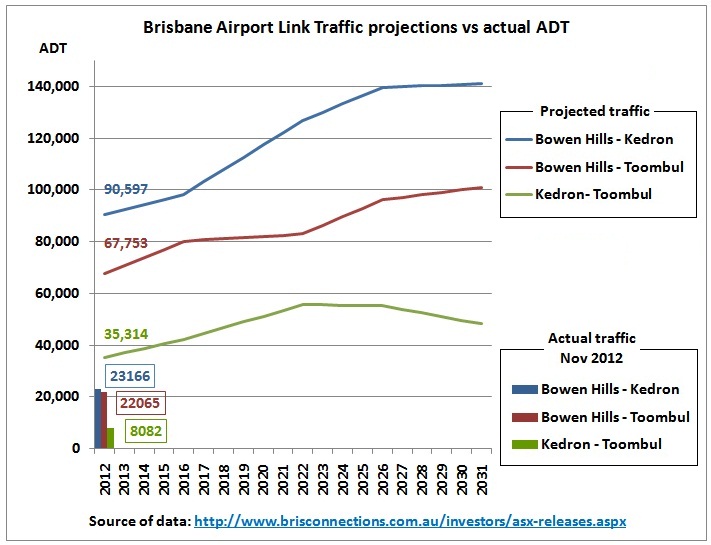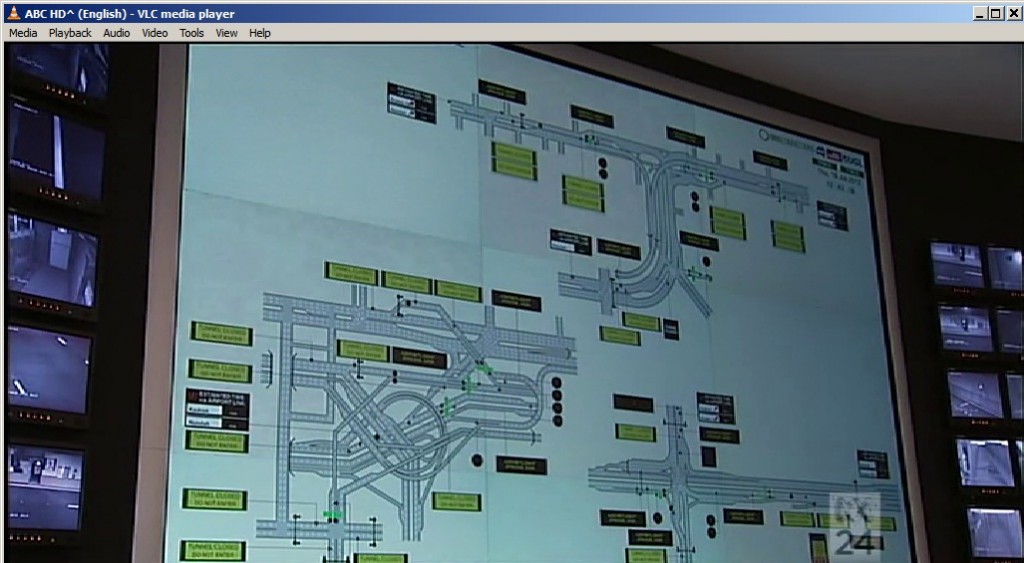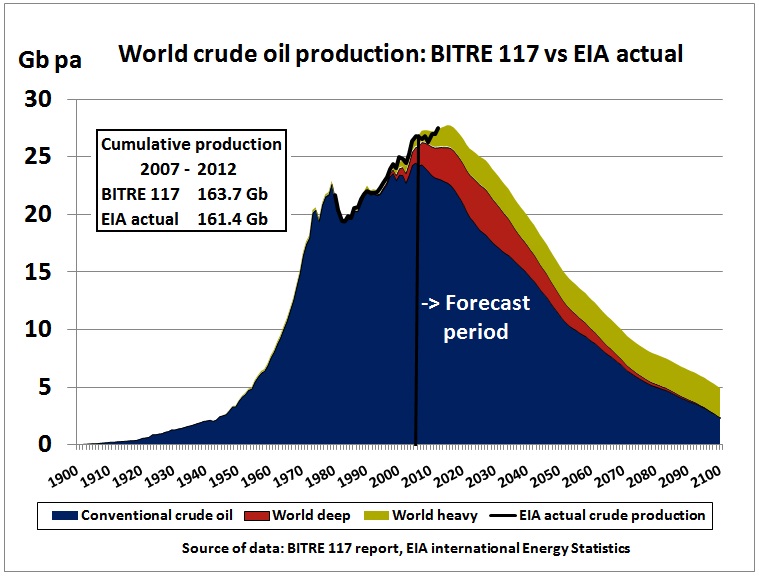Only 2 weeks after NSW infrastructure boss Nick Greiner could not answer the question how toll-way debt in Sydney can be paid back, the answer comes from another Australian capital city: never. No worries, however, we are now being told that the Queensland taxpayer got a set of lovely, world class roads for a bargain price. Have lessons been learnt?
BrisConnections, operators of Brisbane Airport Link, go into voluntary administration
19/2/2013
THE operators of Brisbane Airportlink [6.7 km] have gone under with debts of more than $3 billion [out of a total project cost of 4.8 bn] but the toll road will continue to operate as normal.
The board of BrisConnections called in voluntary administrators this morning, shortly before bank investors in the project appointed PPB Advisory as the receiver managers of the project.
It follows a trading halt last November when BrisConnections’ CEO Ray Wilson revealed the company’s debts were greater than the value of the asset.…….
Overblown traffic forecasts have been blamed for the project’s financial failure.
Traffic forecaster ARUP projected that 135,000 vehicles a day would use the Airportlink a month after opening, growing to 190,000 within six months of operation.
In December, an average of 47,102 vehicles a day used the tunnels, which currently carry discounted tolls of $2 and $2.50.
Let’s have a look at the traffic stats in 2012. The toll-free period ended mid October, in December there were school holidays.
 Source of data: http://www.brisconnections.com.au/investors/asx-releases.aspx
Source of data: http://www.brisconnections.com.au/investors/asx-releases.aspx
The comparison to traffic projections from the original product disclosure statement tells the whole story:
 Traffic projections from the 3rd July 2007 PDS are available here:
Traffic projections from the 3rd July 2007 PDS are available here:
http://www.brisconnections.com.au/media/7760/final_pds_noapplication_20june_2008.pdf
In the above graph, we take Nov 2012 as a ‘normal’ month representative for 2012, after the end of the toll-free period and without X’mas holidays. Here are some excerpts from recent media reports which reflect the underlying mindset, even after the financial collapse:
TICKY FULLERTON [ABC TV]: “These were independent forecasts… This has happened ….the Cross City tunnel down in Sydney and indeed other toll-roads. Why has this been a problem again and again?”
SCOTT PHILLIPS [The Motley Fool]: “Drivers in Brisbane simply don’t like toll-roads…the Queensland taxpayer actually has come out of it very, very nicely. A brand new asset, lots of lovely roads, for $270 m dollars, it’s really a bargain for the Queensland taxpayer, that’s for sure”
http://www.abc.net.au/news/2013-02-19/the-motley-fools-scott-phillips-discusses-the-week/4528676
Of course, there are no independent traffic consultants. Once engaged, would one expect a lower, realistic traffic forecast which implies that debt cannot be paid back and that a project is financially not viable?
The Motley Fool’s website says its purpose is to educate, amuse and enrich investors
http://www.fool.com.au/about-us/
The view that taxpayers got everything at a bargain price is not really amusing, however. Rather, it is the same disrespect for savings of private investors as was shown by INSW’s Nick Greiner when he mentioned at an ITLS seminar that no tax-payer money was lost for the Cross City tunnel.
12/2/2013 No debt repayment plan for Sydney’s toll-ways
http://crudeoilpeak.info/no-debt-repayment-plan-for-sydney%e2%80%99s-toll-ways
Apart from embellished traffic projections the continuing financial debacles of road tunnels prove that construction costs of road tunnels are too high compared to what motorists are prepared to pay for tolls. They also show that Australian capital cities have reached their economic limits to growth, given their car-based settlement structure has become too expensive. But this has not sunk in:
TREVOR ROWE [Briscon’s non-executive chairman]: “The Airportlink M7 is unquestionably a world class piece of transport infrastructure that will continue to support Brisbane’s growth into the decades ahead.”
Decades ahead?
Graph from the Australian government’s internal peak oil report BITRE 117, showing 2009 forecast vs. actual data. More details are here: http://crudeoilpeak.info/australian-government-kicks-own-goals-in-senate-peak-oil-debate-peaky-leaks-part-3
On 22/10/2007 I warned the Airport Link EIS team of SKM not to build any more road tunnels because peak oil is around. A reply came in February 2008, just as oil prices started to skyrocket. It argued that demand for private passenger transport will continue regardless of public transport improvements and fuel costs. I will now move this topic to my menu “I told you so”
Conclusion: It is a fact that road tunnel construction costs are too high compared to the willingness of motorists to pay tolls which would be high enough to pay back debt. The 1st thing to be done now is to analyse to which extent high oil prices have pushed up construction costs while at the same time the paying capacity of motorists has been reduced. At the time of writing, Singapore’s Mogas 95 was $ 134 a barrel.
Previous post:
6/7/2012 Brisbane Airport Link: another tollway miracle of growing debt and assumed traffic growth (part 1)
Addenda (response to various media reports)
(1) Prof. John Rose, ITLS:
“Forecasts were done in 2005 and 2006. Since then we had a global financial crisis. You can see the consumer sentiment that’s dropped and people aren’t willing to pay….
A lot of people have superannuation tied into these types of companies. So there are actual ramifications for mums and dads out there.”
http://www.abc.net.au/news/2013-02-19/brisconnections-goes-broke-after-seven-months/4528684?section=qld
Comment: In 2005, Matthew Simmons wrote his book “Twilight in the Desert: The Coming Saudi Oil Shock and the World Economy” http://en.wikipedia.org/wiki/Matthew_Simmons
So the writing was on the wall. It was ignored.
The global financial crisis was triggered by the confluence of accumulated debt and high oil prices as a result of peak oil.
Causes and Consequences of the Oil Shock of 2007–08
Whereas historical oil price shocks were primarily caused by physical disruptions of supply, the price run-up of 2007-08 was caused by strong demand confronting stagnating world production. Although the causes were different, the consequences for the economy appear to have been very similar to those observed in earlier episodes, with significant effects on overall consumption spending and purchases of domestic automobiles in particular. In the absence of those declines, it is unlikely that we would have characterized the period 2007:Q4 to 2008:Q3 as one of economic recession for the U.S. The experience of 2007-08 should thus be added to the list of recessions to which oil prices appear to have made a material contribution.
http://muse.jhu.edu/journals/brookings_papers_on_economic_activity/v2009/2009.1.hamilton.html
(2) ASA labels BrisConnections collapse a disaster
“Stephen Mayne, from the Australian Shareholders Association, says it’s a spectacular failure that dwarfs other trouble-plagued toll roads around the country.
“For the builders to lose a billion, the investors to lose $1.2 billion, and the bankers to lose between $1 and $2 billion, that’s just a fiasco,” he told ABC Radio……
Retired Sydney academic Professor John Goldberg last year warned BrisConnections was headed for “inevitable financial collapse”.
He said he conducted his own analysis of the financial modelling for the project, including the method used to come up with absurdly inflated traffic forecasts.
He said the modelling was geared toward securing investors, and had no real connection to reality.
The modelling was the result of the “work back principle” which was all about getting investors on board, Prof Goldberg told ABC Radio.
Comment: Dr. Goldberg’s anaylsis uncovers to the crux of the matter.
From:
(3) Airport Link failure to hit private funding (p 1)
“Colonial First State’s head of global listed infrastructure, Peter Meany, said toll roads in future would need significant public funding, a reversal of the trend over the past decade of governments shifting risk onto the private sector.
Transurban’s talks with the NSW government over plans for a possible major road link in Sydney – where the state is expected to make a significant capital contribution – between the F3 and M2 is being touted as the new way to fund toll roads.
Mr Meany, Colonial First State’s head of global listed infrastructure, said he did not believe the collapse of four toll roads in Australia would block future projects being built. “I think the need for transport infrastructure, particularly toll roads, is still there,” he said. “Congestion is only going to get worse. It’s just finding a way for the economics to stack up.”
http://www.afr.com/p/business/companies/airport_link_failure_to_hit_private_HeJJ0fzQjXAgCbpKBQRnrI
Comment: The lesson has not been learnt. Congestion will go away when peak oil turns into physical fuel shortages at filling stations. The only “solution” then will be car-pooling and fuel rationing. The proper solution, electric rail on toll-ways, is slipping away.
(4) “Beaten, but looking for a comeback” (p 4)
“There are lots of lessons to be learnt …..Looking back at the chain of events, almost every step was flawed….bullish bias…..before the financial crisis, when debt was the steroid….wildly optimistic traffic forecasts……even the auction process was flawed with one contractor, Leighton, bidding against itself. Transurban chief executive Scott Charlton thinks the future of the model lies in special federal infrastructure loans repaid from traffic revenue to share the risk but retain private sector investment. It’s a positive sign that the capital is there, waiting to be deployed for the right project.”
http://www.afr.com/p/business/companies/toll_roads_looking_for_comeback_mAt3ej0UBCbNf5troTs4yN
Comment: The financial crisis is permanent, that’s why the banks pulled the plug. And those infrastructure bonds Transurban was already using did not result in this toll-way operator paying back its debt. Road tunnels can never be ‘the right projects’ because they are energy-inefficient
14/8/2012 Transurban does not pay back its debt
http://crudeoilpeak.info/transurban-does-not-pay-back-its-debt
(5) “Brisconnections on road to nowhere” (p 14)
“What is likely is that Macquarie, or anyone else for that matter, will have the chance to buy into the situation in the coming weeks. Receivership is often a trigger for lenders to make way for distressed debt hedge funds….In the end, it is understood there was unanimous rejection of the restructure proposal from eight remaining traditional lenders. Lenders had their heart set on controlling the company via receivership for some months”
http://www.afr.com/p/opinion/brisconnections_on_road_to_nowhere_FZwsJDrxkGJAK2WXNWNM0M
Comment: In this article, blame for the collapse is put on the disagreement and power struggles between banks. The banks involved are: BNP Paribas, United Overseas Bank, KBC Finance Ireland, Societe Generale, UniCredit, BOS International, Depfa Bank, DZ Bank, and Allied Irish Banks. European banks who might have thought that mining boom country Australia is a paradise for road investments.
Conclusion:
Dr. Goldberg’s work back principle is exactly what happened, combined with the mindset of perpetual growth, disregarding peak oil. Prof. John Rose from Sydney Uni reminds everyone that mums and dads have lost money. Most other articles contain no-worry and business-as-usual opinions without having learnt the real lesson, namely that we see the end of road tunnels.

